I had some friends coming over to look at what I do in speaker building. So I pulled out some half-complete speakers from storage and just lined them up to let them see physically what these things sound like. Out of these friends, exactly one has seen one or two high-end audio systems, the others were from the Gen Z which means they've only used Rs.1,000 earphones or Bluetooth boomboxes. So, their feedback was not really very on-point, but nevertheless, it gave me a chance to see what my own projects look like once they are actually set up.
This one below is a small standmount, whose front baffle is small, but its depth is bigger than its front -- the depth is almost 2 feet, because the internal volume is about 30 litres. It uses a Fostex FF225WK 8" full range as a midbass and a SB tweeter. The idea was to make something "small" to keep close to the wall, and have somewhat higher sensitivity than usual, to be driven by a SET valve amp. It has a port in the rear surface. This is a different model from what I usually make, because I almost never design for tube amps.
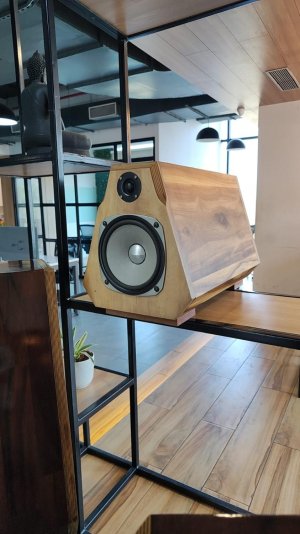
Two of these are floorstanders, two are large standmounts on stands of my own design.
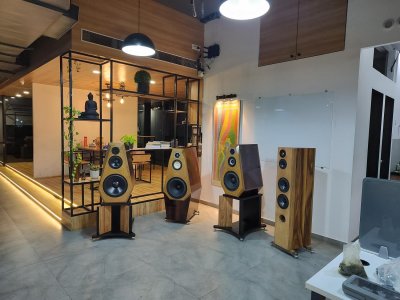
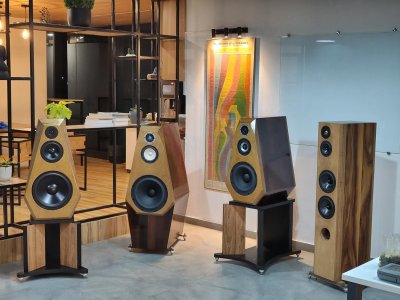
This one below is a standmount with the SB29NRX as woofer, a Jordan Eikona 2 as midrange, and a Satori ring radiator tweeter.
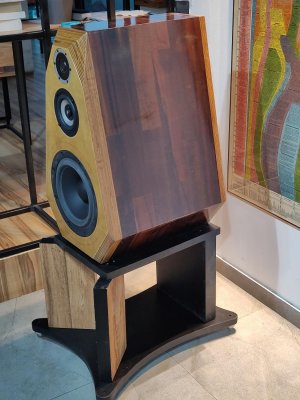
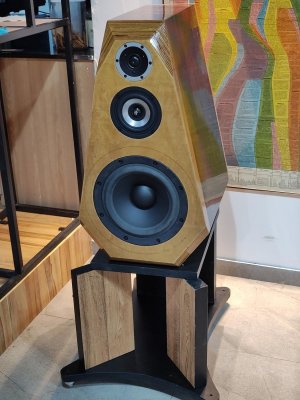
The stands were an experiment with MDF construction. The upright pieces are 50mm thick MDF (two sheets of 25mm each, stuck). The two uprights in front have vitrified tiles stuck on them, for rigidity and looks. The base has D-nuts and spikes. As always for me, the spikes are from Sound Foundations.
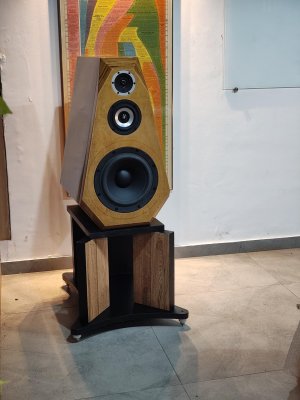
Don't ask me how they sound -- they are not finished yet.
This one below is a small standmount, whose front baffle is small, but its depth is bigger than its front -- the depth is almost 2 feet, because the internal volume is about 30 litres. It uses a Fostex FF225WK 8" full range as a midbass and a SB tweeter. The idea was to make something "small" to keep close to the wall, and have somewhat higher sensitivity than usual, to be driven by a SET valve amp. It has a port in the rear surface. This is a different model from what I usually make, because I almost never design for tube amps.

Two of these are floorstanders, two are large standmounts on stands of my own design.


This one below is a standmount with the SB29NRX as woofer, a Jordan Eikona 2 as midrange, and a Satori ring radiator tweeter.


The stands were an experiment with MDF construction. The upright pieces are 50mm thick MDF (two sheets of 25mm each, stuck). The two uprights in front have vitrified tiles stuck on them, for rigidity and looks. The base has D-nuts and spikes. As always for me, the spikes are from Sound Foundations.

Don't ask me how they sound -- they are not finished yet.

